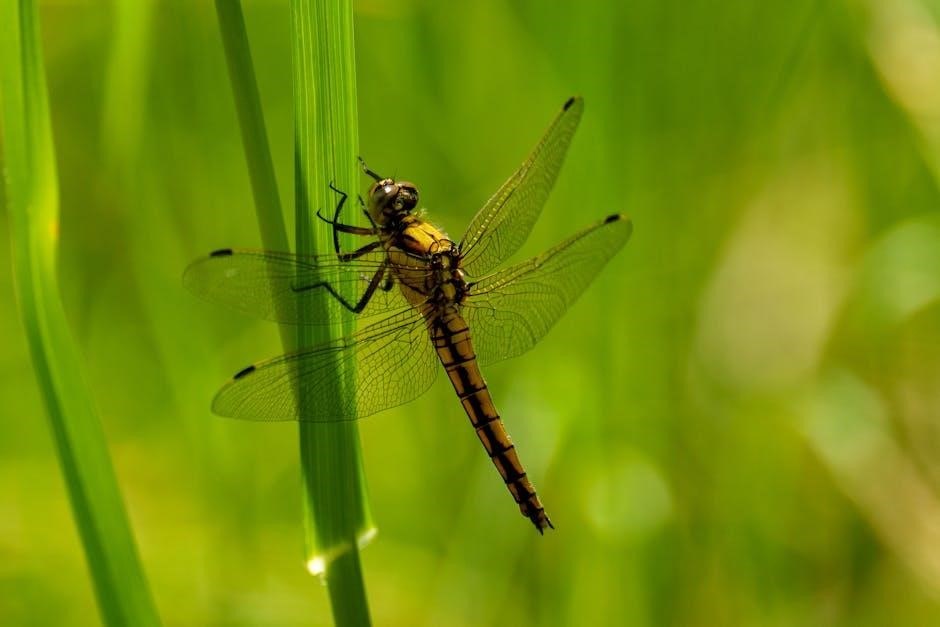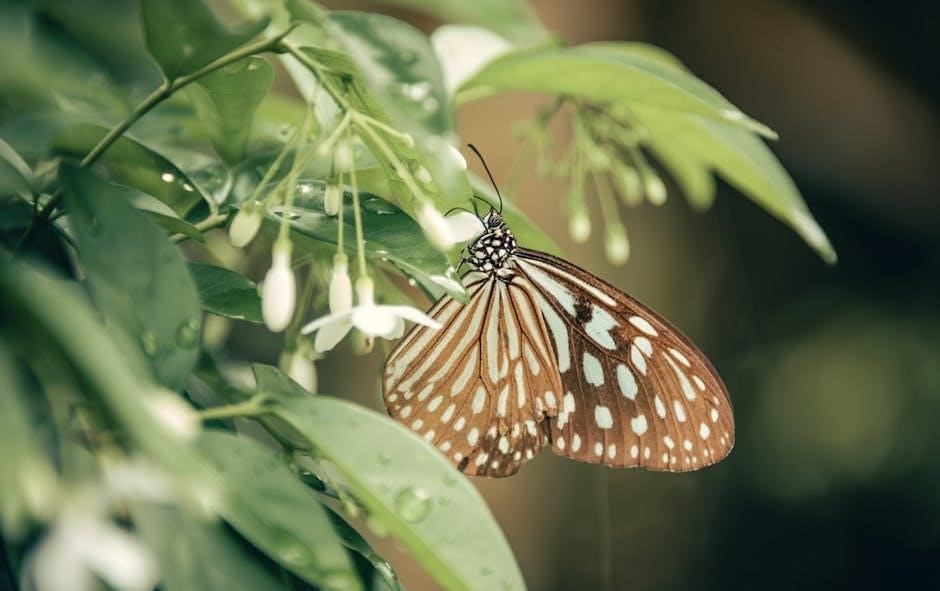Overview of Michigan Civil Jury Instructions
Michigan civil jury instructions are directions from judges to jurors, outlining applicable laws and factual issues in a case. They guide jurors in understanding legal standards and reaching verdicts.
1.1 Definition and Purpose
Michigan Civil Jury Instructions (MCJI) are standardized directions provided to jurors, outlining the applicable law and factual issues in a case. Their purpose is to guide jurors in understanding legal standards, evaluating evidence, and applying the law to reach a fair and impartial verdict, ensuring clarity and consistency in the decision-making process.
1.2 Role in Civil Proceedings
MJCI plays a critical role in civil proceedings by providing jurors with clear legal standards and guidelines. They outline the issues in dispute, explain applicable laws, and instruct jurors on how to evaluate evidence and reach a verdict. This ensures jurors understand their duties and can apply the law fairly, maintaining the integrity of the judicial process.

Importance of Jury Instructions in Civil Cases
Jury instructions are crucial for ensuring fairness and consistency in civil cases, providing jurors with clear legal standards to guide their decisions and evaluations accurately within the judicial process.
2.1 Ensuring Legal Accuracy
Jury instructions ensure legal accuracy by providing clear, standardized guidance that jurors can apply to the evidence presented. They are crafted to reflect current statutes and legal precedents, minimizing errors and ensuring consistency. This clarity helps jurors understand their role and the applicable laws, fostering fair and reliable verdicts in civil cases.
2.2 Guiding Juror Decision-Making
Jury instructions provide jurors with a clear framework to evaluate evidence and apply the law. They break down complex legal concepts into understandable terms, guiding jurors through the deliberation process. By outlining the legal standards and burden of proof, instructions ensure jurors focus on relevant facts and avoid irrelevant considerations, promoting consistent and fair decision-making in civil cases.

Historical Development of Michigan Civil Jury Instructions
Michigan’s civil jury instructions originated in the 19th century, evolving through legislative updates and judicial practices to standardize legal guidance for jurors, ensuring clarity and consistency.
3.1 Evolution of Jury Instruction Standards
The evolution of Michigan’s jury instruction standards reflects a transition from varied, court-specific guidelines to a unified system. In the early 20th century, standardized instructions emerged to ensure consistency and clarity, reducing disparities in juror guidance. This shift was driven by judicial and legislative efforts to modernize civil procedure, enhancing the reliability of jury decisions across the state.
3.2 Key Legislative and Judicial Reforms
Michigan’s civil jury instructions have been shaped by significant legislative and judicial reforms. The state legislature and Supreme Court have consistently updated standards to reflect evolving legal principles. Key reforms include the adoption of standardized instructions in the 1970s and periodic revisions to align with changes in tort law and evidence rules, ensuring clarity and fairness.
Preparation and Drafting of Jury Instructions
Judges and attorneys collaborate to draft clear, accurate instructions tailored to the case, ensuring jurors understand legal standards and evidence evaluation processes effectively.
4.1 Responsibilities of Judges and Attorneys
Judges and attorneys share the duty of drafting jury instructions, ensuring clarity and legal accuracy. Judges review and approve instructions, while attorneys propose case-specific language, collaborating to provide jurors with clear legal frameworks and evidence evaluation guidelines tailored to the case at hand.
4.2 Standardized vs. Customized Instructions
Michigan civil jury instructions often balance standardized and customized approaches. Standardized instructions provide consistency and reliability across cases, while customized versions address unique case specifics; Judges and attorneys collaborate to ensure instructions are clear and relevant, blending pre-approved language with case-specific details to guide jurors effectively without unnecessary complexity.
Key Components of Michigan Civil Jury Instructions
Michigan civil jury instructions outline the case, applicable laws, and burden of proof, guiding jurors on legal standards and evidence evaluation to reach a fair verdict.
5.1 Statement of the Case
The statement of the case in Michigan civil jury instructions provides a clear overview of the legal framework, including the parties involved, key issues in dispute, and the applicable laws. It outlines the claims, defenses, and legal theories presented, ensuring jurors understand the case’s foundation and the specific questions they must decide. This section sets the stage for the jury’s deliberation process.
5.2 Applicable Laws and Standards
This section outlines the specific laws, legal standards, and evidentiary rules relevant to the case. It ensures jurors understand the legal criteria they must apply, such as statutes, case law, or constitutional provisions. Clear explanations of terms like “negligence” or “breach of contract” are provided, along with the burden of proof and evidentiary standards, ensuring jurors can apply the law accurately.
5.3 Burden of Proof and Evidence Evaluation
This section explains the burden of proof, typically “a preponderance of the evidence” in civil cases, and guides jurors on evaluating evidence. It clarifies how jurors should weigh testimony, documents, and physical evidence, ensuring they base decisions on credible and relevant information. The court’s role in defining the burden and evidence standards is emphasized to ensure fairness and legal compliance.

Delivery and Presentation of Jury Instructions
Jury instructions are delivered clearly and concisely, ensuring jurors understand their role and legal standards. Timing and format are optimized to enhance comprehension and applicability.
6.1 Timing and Format
Jury instructions in Michigan are typically delivered before and after the presentation of evidence, ensuring jurors understand their role from the outset. The format includes both oral and written instructions, with clear language to enhance comprehension. This dual approach helps jurors apply the law accurately and consistently throughout deliberations.
6.2 Clarity and Accessibility for Jurors
Michigan civil jury instructions prioritize clarity to ensure jurors understand legal concepts. Plain language is used to avoid confusion, and complex terms are explained. Judges often provide written copies alongside oral instructions for reference. This approach ensures accessibility, allowing jurors of all educational backgrounds to engage fully with the legal standards and duties outlined in the instructions.

Common Challenges in Interpreting Jury Instructions
Complex legal language, ambiguous phrasing, and varying juror comprehension levels often lead to confusion. Misinterpretation can stem from unclear definitions or conflicting instructions, complicating decision-making processes.
7.1 Ambiguity in Legal Language
The complexity of legal terminology and vague phrasing often leads to confusion among jurors. Ambiguous instructions can result in misinterpretation of key concepts, impacting how evidence is evaluated and laws are applied. This challenge underscores the need for clear, concise language to ensure jurors grasp legal standards accurately. Judges and attorneys must strive to simplify complex terms without losing their legal significance.
7.2 Juror Misunderstandings and Biases
Juror misunderstandings and biases can significantly impact the fairness of a trial. Preconceived notions or lack of legal knowledge may lead jurors to misapply instructions, influencing verdicts. Judges and attorneys must ensure instructions are clear and unbiased to mitigate these risks, fostering an impartial decision-making environment. Addressing these challenges is critical to maintaining the integrity of civil proceedings.
Impact of Jury Instructions on Case Outcomes
Clear jury instructions ensure consistent application of the law, directly influencing verdicts and promoting fair results in civil cases.
8.1 Influence on Verdicts
Clear and precise jury instructions guide jurors in applying the law to the facts, ensuring verdicts align with legal standards and reducing the likelihood of misinterpretation. Ambiguous instructions can lead to inconsistent or unjust outcomes, potentially prompting appeals. The clarity and accuracy of instructions significantly shape the jury’s understanding and decision-making process in civil cases.
8.2 Role in Reducing Appeals
Clear and accurate jury instructions minimize the likelihood of appeals by ensuring jurors apply the law correctly. When instructions are precise, errors in verdicts are reduced, leading to fewer post-trial challenges. Well-crafted instructions also help jurors understand complex legal concepts, reducing misunderstandings that could otherwise result in appeals and prolong legal proceedings.

Notable Cases Involving Michigan Civil Jury Instructions
Several landmark cases highlight the critical role of jury instructions in shaping civil outcomes, demonstrating their impact on justice and legal precedent in Michigan courts.
9.1 Landmark Cases and Their Implications
Landmark cases in Michigan highlight the significance of jury instructions in shaping legal standards. Cases involving negligence, medical malpractice, and product liability often hinge on precise instructions. Incorrect or ambiguous instructions have led to overturned verdicts, emphasizing the need for clarity. These cases underscore how jury instructions guide juror understanding and ensure fair outcomes, making them a cornerstone of civil justice.
9.2 How Jury Instructions Affected Case Results
Clear and precise jury instructions are crucial in determining case outcomes. In Michigan, ambiguous instructions have led to overturned verdicts, while well-crafted ones ensure jurors apply the correct legal standards. Proper instructions guide jurors in evaluating evidence and applying the law, directly influencing verdicts and reducing appeal rates by minimizing misunderstandings and ensuring justice is served fairly and consistently.
Reforms and Updates to Michigan Civil Jury Instructions
Recent reforms have focused on clarifying complex legal terms and incorporating new evidentiary standards. Updates aim to enhance clarity and ensure instructions align with evolving case law.
10.1 Recent Changes and Amendments
Recent updates to Michigan civil jury instructions include clarifications on comparative fault and damages calculations. Amendments aim to align instructions with evolving case law, ensuring consistency and accuracy. Changes also address emerging issues like electronic evidence presentation and jury access to trial exhibits. These reforms enhance clarity and accessibility, reflecting a commitment to modernizing legal standards for fairness and precision.
10.2 Technological Advancements in Instruction Delivery
Michigan has embraced technology to enhance jury instruction delivery, improving clarity and accessibility. Electronic platforms now allow jurors to access digital versions of instructions, reducing reliance on physical documents. Interactive tools, such as videos and animations, are being used to explain complex legal concepts. Additionally, real-time updates ensure jurors receive the most current information, promoting accuracy and understanding in the decision-making process.
- Digital platforms for instruction delivery
- Interactive tools for complex legal concepts
- Real-time updates for accuracy

Training and Resources for Judges and Attorneys
Continuous training programs for judges and attorneys on Michigan civil jury instructions are provided by state judicial institutions, ensuring accurate and fair application in trials.
11.1 Continuing Education Programs
Continuing education programs for judges and attorneys in Michigan focus on updating knowledge of civil jury instructions. These programs, often offered by the Michigan Judicial Institute, cover legal standards, evidentiary rules, and best practices for instruction drafting. They ensure legal professionals stay informed about changes and developments, promoting accuracy and fairness in jury decision-making processes.

11.2 Access to Updated Instruction Manuals
Judges and attorneys in Michigan rely on updated instruction manuals to ensure accuracy in jury instructions. These manuals are regularly revised to reflect legal changes and are accessible through the Michigan Courts website. Subscriptions and email alerts are available, ensuring practitioners stay informed. Digital and print formats cater to different preferences, maintaining consistency in legal proceedings statewide.
Public Access to Michigan Civil Jury Instructions
12.1 Transparency in Legal Proceedings

Public access to Michigan civil jury instructions ensures transparency in legal proceedings, allowing individuals to understand the legal standards applied during trials.
12.2 Availability of Instruction Documents
Jury instructions are made available through official state websites and legal databases, providing citizens and legal professionals with easy access to these critical documents.
Transparency in legal proceedings is a cornerstone of Michigan’s civil justice system. Public access to jury instructions ensures that all parties, including jurors, understand the legal framework guiding the case. By making these instructions readily available, courts promote accountability and trust in the judicial process. Clarity and accessibility foster a well-informed public and uphold the principles of open justice.
The availability of Michigan civil jury instruction documents ensures transparency and public access to legal information. These documents are typically published on official court websites, allowing easy downloading in formats like PDF. Many courts also provide searchable databases, enabling quick access to specific instructions. This accessibility fosters understanding of legal standards and promotes trust in the judicial process.
Comparisons with Federal Jury Instructions
Maryland’s civil jury instructions differ from federal ones in their focus on state-specific laws and procedures, while federal instructions often address broader, nationwide legal standards.
13.1 Similarities and Differences
MICHIGAN CIVIL JURY INSTRUCTIONS share similarities with federal instructions in their purpose to guide jurors on the law. However, differences arise in their specific application, as Michigan instructions are tailored to state laws and court rules. Federal instructions often align with broader federal statutes, leading to variations in wording, structure, and interpretation of legal standards, which can impact juror understanding and application of the law.
13.2 Impact on Interstate Cases
Differences between Michigan civil jury instructions and federal counterparts can influence interstate cases, potentially affecting verdict consistency. Attorneys must adapt to jurisdiction-specific guidelines, ensuring compliance with local standards. This divergence may lead to forum shopping, where parties seek more favorable jurisdictions. Judges and attorneys must carefully navigate these nuances to ensure fair and consistent outcomes across state lines.

Future Trends in Michigan Civil Jury Instructions
Future trends include digital platforms for instruction delivery, AI-driven drafting tools, and enhanced clarity through plain language initiatives, ensuring modernized and accessible legal standards for jurors.
14.1 Modernization Efforts
Michigan is advancing its civil jury instructions through digital platforms, enhancing accessibility and clarity. Modernization includes converting instructions into plain language and utilizing interactive modules. Electronic delivery systems are being implemented to streamline the process for judges and jurors. These efforts aim to improve understanding and efficiency, ensuring instructions remain relevant and effective in contemporary legal settings.
14.2 Potential Innovations in Instruction Delivery
Potential innovations in instruction delivery include digital platforms for interactive jury instructions, incorporating visual aids like videos and infographics. The use of AI to tailor instructions to specific cases could enhance clarity. Post-COVID-19, virtual proceedings highlight the need for accessible online formats. Future innovations may also include real-time updates to instructions, ensuring jurors have the most accurate information.
Michigan civil jury instructions are crucial for ensuring fairness, accuracy, and clarity in legal proceedings. They guide jurors, uphold justice, and balance legal standards with juror understanding.
15.1 Summary of Key Points
Michigan Civil Jury Instructions are critical in guiding jurors to reach fair and legally sound decisions. They ensure clarity on laws, evidence evaluation, and burdens of proof; The instructions balance legal accuracy with juror comprehension, addressing potential biases and misunderstandings. Regular updates and reforms enhance their effectiveness, reflecting evolving legal standards and societal needs.
15.2 Final Thoughts on the Role of Jury Instructions
Jury instructions are pivotal in ensuring justice and fairness in civil cases. They guide jurors to interpret evidence and apply the law accurately, directly influencing verdicts. Clear and precise instructions are essential to prevent misunderstandings and biases. Ongoing reforms and modernization efforts will further enhance their effectiveness, solidifying their critical role in the legal system;

































